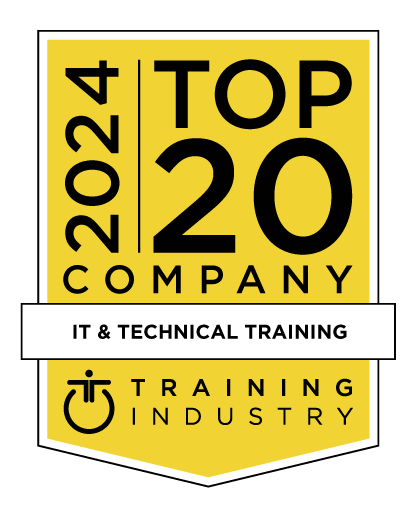title
Please take a moment to fill out this form. We will get back to you as soon as possible.
All fields marked with an asterisk (*) are mandatory.
Cloud Operations on AWS (formerly Systems Operations)
AWS Training Pass
Take advantage of flexible training options with the AWS Training Pass and get Authorized AWS Training for a full year.
Learn More
Course Description
Overview
This course teaches systems operators and anyone performing systems operations functions how to manage and operate automatable and repeatable deployments of networks and systems on AWS. You will learn about systems operations functions, such as installing, configuring, automating, monitoring, securing, maintaining, and troubleshooting these services, networks, and systems. The course also covers specific AWS features, tools, and best practices related to these functions.- Duration: 3 days
Objectives
- Identify the AWS services that support the different phases of Operational Excellence, an AWS Well-Architected Framework pillar
- Manage access to AWS resources using AWS accounts and organizations and AWS Identity and Access Management (IAM)
- Maintain an inventory of in-use AWS resources by using AWS services, such as AWS Systems Manager, AWS CloudTrail, and AWS Config
- Develop a resource deployment strategy using metadata tags, Amazon Machine Images (AMIs), and AWS Control Tower to deploy and maintain an AWS Cloud environment
- Automate resource deployment by using AWS services, such as AWS CloudFormation and AWS Service Catalog
- Use AWS services to manage AWS resources through SysOps lifecycle processes, such as deployments and patches
- Configure a highly available cloud environment that uses AWS services, such as Amazon Route 53 and Elastic Load Balancing, to route traffic for optimal latency and performance
- Configure AWS Auto Scaling and Amazon EC2 Auto Scaling to scale out your cloud environment based on demand
- Use Amazon CloudWatch and associated features, such as alarms, dashboards, and widgets, to monitor your cloud environment
- Manage permissions and track activity in your cloud environment by using AWS services, such as AWS CloudTrail and AWS Config
- Deploy your resources to an Amazon Virtual Private Cloud (Amazon VPC), establish necessary connectivity to your Amazon VPC, and protect your resources from disruptions of service
- State the purpose, benefits, and appropriate use cases for mountable storage in your AWS cloud environment
- Explain the operational characteristics of object storage in the AWS Cloud, including Amazon Simple Storage Service (Amazon S3) and Amazon S3 Glacier
- Build a comprehensive cost model to help gather, optimize, and predict your cloud costs by using services such as AWS Cost Explorer and the AWS Cost & Usage Report
Audience
- System administrators and operators who are operating in the AWS Cloud
- Informational technology workers who want to increase their systems operations knowledge
Prerequisites
-
We recommend that attendees of this course have:
- Successfully completed the AWS Technical Essentials course
- A background in software development or systems administration
- Proficiency in maintaining operating systems at the command line, such as shell scripting in Linux environments or cmd/PowerShell in Windows
- Basic knowledge of networking protocols (TCP/IP, HTTP)
Topics
- What is Cloud Operations
- AWS Well-Architected Framework
- AWS Well-Architected Tool
- AWS Identity and Access Management (IAM)
- Resources, accounts, and AWS Organizations
- Methods to interact with AWS services
- Tools for automating resource discovery
- Inventory with AWS Systems Manager and AWS Config
- Hands-On Lab: Auditing AWS Resources with AWS Systems Manager and AWS Config
- Cloud Operations in deployments
- Tagging strategies
- Deployment using Amazon Machine Images (AMIs)
- Deployment using AWS Control Tower
- Deployment using AWS CloudFormation
- Deployment using AWS Service Catalog
- Hands-On Lab: Infrastructure as Code
- AWS Systems Manager
- Hands-On Lab: Operations as Code
- Distributing traffic with Elastic Load Balancing
- Amazon Route 53
- Scaling with AWS Auto Scaling
- Scaling with Spot Instances
- Managing licenses with AWS License Manager
- Monitoring and maintaining healthy workloads
- Monitoring AWS infrastructure
- Monitoring applications
- Hands-On Lab: Monitor Applications and Infrastructure
- Maintaining a strong identity and access foundation
- Implementing detection mechanisms
- Automating incident remediation
- Building a secure Amazon Virtual Private Cloud (Amazon VPC)
- Networking beyond the VPC
- Configuring Amazon Elastic Block Store (Amazon EBS)
- Sizing Amazon EBS volumes for performance
- Using Amazon EBS snapshots
- Using Amazon Data Lifecycle Manager to manage your AWS resources
- Creating backup and data recovery plans
- Configuring shared file system storage
- Hands-On Lab: Automating with AWS Backup for Archiving and Recovery
- Deploying Amazon Simple Storage Service (Amazon S3)
- Managing storage lifecycles on Amazon S3
- Gaining AWS cost awareness
- Using control mechanisms for cost management
- Optimizing your AWS spend and usage
- Hands-On Lab: Capstone lab for CloudOps
Self-Paced Training Info
Learn at your own pace with anytime, anywhere training
- Same in-demand topics as instructor-led public and private classes.
- Standalone learning or supplemental reinforcement.
- e-Learning content varies by course and technology.
- View the Self-Paced version of this outline and what is included in the SPVC course.
- Learn more about e-Learning
Course Added To Shopping Cart
bla
bla
bla
bla
bla
bla
Self-Paced Training Terms & Conditions
Exam Terms & Conditions
Sorry, there are no classes that meet your criteria.
Please contact us to schedule a class.

STOP! Before You Leave
Save 0% on this course!
Take advantage of our online-only offer & save 0% on any course !
Promo Code skip0 will be applied to your registration
Purchase Information
title
Please take a moment to fill out this form. We will get back to you as soon as possible.
All fields marked with an asterisk (*) are mandatory.










